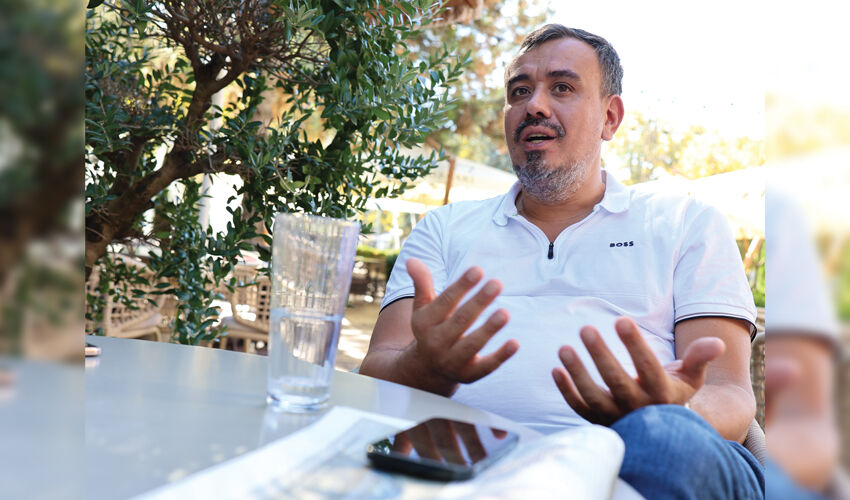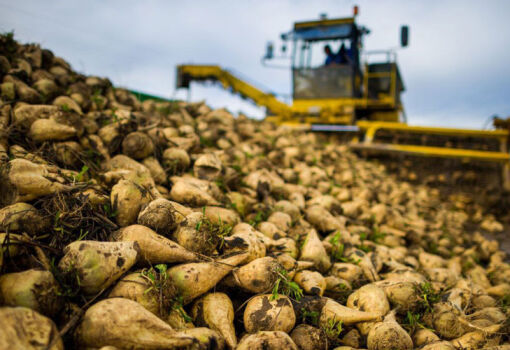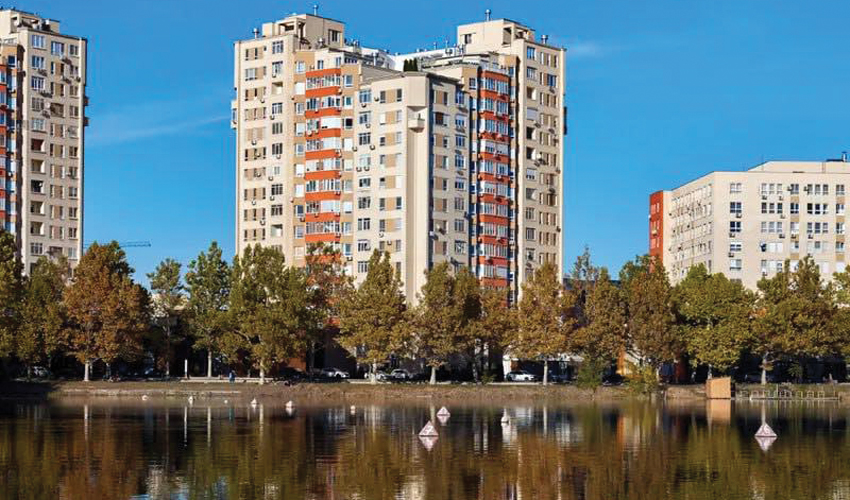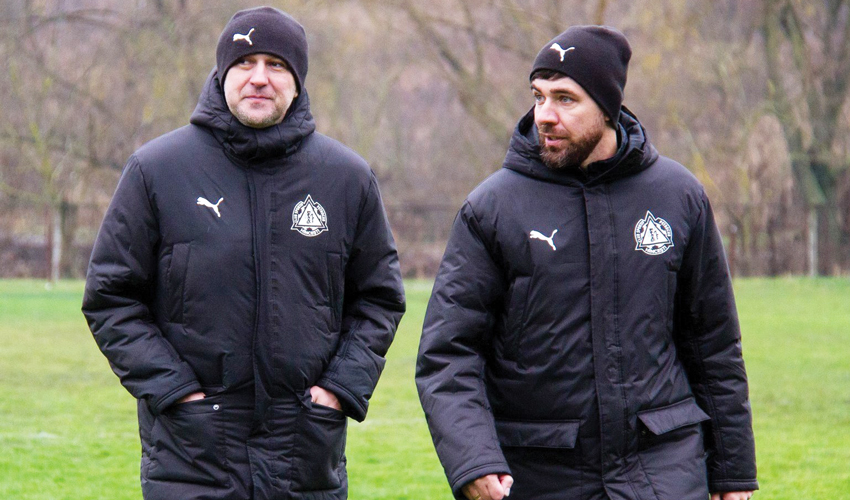
Vasily Lungu
LP: – Mr. Lungu, how, in your opinion, has Moldovan HoReCa changed over the last 3-4 years? If we look not at the number of signs, but at guest behavior, revenue structure, formats of establishments?
– Before the pandemic we were underdeveloped in terms of sales, processes and consumer culture. There were a lot of establishments, but the market lived more on inertia than on ideas. The pandemic turned everything upside down: the same delivery service grew exponentially, because people began to value time and optimize their lives through orders. Time has become an expensive asset; this is a global trend – “press a button and get food”, which has taken hold in our country and is growing every year.
At the same time, classic restaurants still rely not only on cooking. A restaurant is an emotion, an atmosphere, a scenography of taste. The same cocktail, the right steak, work at the open kitchen, live service – everything that cannot be packed and delivered without losses remains the prerogative of the restaurant. Therefore, the market has divided quite logically: delivery is “utilitarian food” (a burger, pizza, rolls, something that does not lose quality on the way), and the hall is an experience that people come for specifically.
LP: – If we compare it with our neighbors – Romania and Ukraine – is our market developing faster or slower?
– Definitely slower. Our neighbors have an earlier ordering culture and better logistics. There, the share of delivery in the turnover of chains is higher (in fast food it is noticeably higher). In Romania, for example, delivery can account for 20-25% of restaurant turnover and up to 40% for fast food chains. Our figures are an order of magnitude more modest, and this is understandable: smaller market, smaller audience, less willingness to pay. But we have also experienced strong shifts. Guests have become more demanding of quality and service, they think more about what they are paying for and what level of emotion they are getting.
LP: – Which formats in Moldovan HoReCa have grown more noticeably than others?
– A full-fledged “breakfast industry” has appeared in Moldova, which never existed before: morning pastries, croissants, takeaway coffee culture. There is also a growing interest in Asian cuisine – Japanese, Chinese, Thai. National cuisine and country restaurants have grown powerfully: closed borders in the pandemic reoriented our citizens to local establishments. People began to go out into nature and discover new restaurant formats. This has formed a stable niche of countryside establishments of a new type – with the right technology, proper sanitation and competent service.
LP: – Why are there so few premium establishments in Chisinau – those “five forks” restaurants?
– Everything rests on the culture of gastronomy and the average check. In Europe fine dining keeps on a check of 150-200 euros per person – we do not have such a market yet. The premium segment requires not only high cuisine and atmosphere, but also the willingness of the audience to pay for a complex product, and to pay regularly. It takes years for such a habit to form. We are getting there: the quality is growing, and so is the demand for the right ingredients and service. However, the demand is still in its infancy.
LP: – If we talk about trends, there is an impression that our HoReCa has finally “tasted” fish and seafood, creating a full-fledged segment. Is this true?
– Yes, it is a fact. Since 2022 the consumption of fish and seafood in restaurants has increased significantly. As soon as the project “Chernomorka” appeared, the demand arose: suppliers – “Ocean Fish”, “Metro” and others – pulled up. When there is a stable supply, it is easier for a restaurant to take risks and develop the culture of the product. I think consumption has increased by 50%, in some places by many times. This is an example of how one strong establishment can move an entire food category.
The next surge will be meat and steaks, including dry-aged steaks – there is a long cycle, a different production cost, different requirements for aging and storage, and therefore a different price. There have already been attempts to work with such raw materials, but the market was not ready to pay for long ripening as a separate gastronomic value. The price of such a dish will not be lower than in Paris or New York – on average, 100 euros. But over time, the attitude changes, you come to understand: you pay for technology, for time, for rarity, for skill. And only then does the product “shoot out”.
LP: – There is a boom for Georgian cuisine in Chisinau. Is this a fashion flash or a longer trend?
– It is a trend, and it is connected with emotion. People visited Georgia, fell in love with the atmosphere – bread, wine, khachapuri, toasts – and wanted to repeat it at home. Which is quite normal, as gastronomy always follows traveling. Today it’s Georgian cuisine, tomorrow perhaps Lebanese or Spanish. Why not? Cuisine is a great way to travel without leaving the city.
LP: – There are at least five large formats in your restaurant holding. If we are talking about investments, which ones are the priority at the moment?
– We have a diversified investment portfolio, but we continue to develop all areas – gastronomic outlets, beer chain, evening venues. For example, in the beer category, the idea is important to us: not just to sell beer, but to create an emotion around it – with the serving, the atmosphere, the organization of events.
There are also large partnership projects with a five-year horizon. The pandemic slowed them down for two years, then the war added uncertainty, but we have restored them and are refining them.
By the way, we are also considering franchising, though very selectively: a brand is an emotion and culture, it cannot be replicated without losing the soul of the project. So far our chain brand has four operating locations, the fifth one is on pause. In the next three years, we plan to increase both the number of locations and turnover.
LP: – Which of your establishments are the largest?
– Mojito Central is the leader among restaurants in terms of seating, with over 500 seats. Among beer halls – Draft Arena, designed for large events. These are different worlds: in one – gastronomy and strong daytime traffic, in the other – evening events and a completely different pace. In total, we have 12 locations, including the Draft chain.
LP: – It is commonly believed that the restaurant segment is a supermarket segment. How true is this?
– It’s a myth. A restaurant is one of the most costly types of business in Moldova. There is too much human factor here – training, turnover, quality of service, mistakes. Plus expensive raw materials, rental rates, utilities, taxes, write-offs. During the covid period, our group of companies had a turnover of 150 million lei. In 2024, it increased to 200 million lei, and in 2025 we expect a revenue of 230 million lei. Yes, the growth is tangible, but it is a growth in volume, in quality, not in superprofits.
The average profitability of a restaurant is not even 50%, as someone thinks. Our ceiling is 10-20%, and even then, with competent management. Good profitability in the restaurant business is the result of discipline and culture, not a magic formula.
LP: – How much can it cost to open a restaurant in Chisinau today?
– The range of investments is huge. You can “shoot stars” on one concept and spend a lot, and you can build a compact format and fit into a much smaller budget. It all depends on the idea, the dislocation, the level of the kitchen, the length of the supply chain, the equipment requirements, whether you’re hosting events or running a bar school. Personally, I am against universal calculators: a restaurant is a living organism.
LP: – What would you say is the biggest challenge in the industry?
– HR is the main risk factor. The pandemic showed many young guys that HoReCa is unstable: someone left the profession for IT, counseling, office work. The deficit is still felt, although we invest in staff – in training, internal studios, even therapists work with teams. It cannot be otherwise, because HoReCa is hard, emotional work, and if an employee has no support in the company, burnout is inevitable.
We have already reached the point when we are considering the possibility of attracting workers from abroad – from Nepal, for example. This is not a fashion, but a necessity. The market is experiencing staff hunger, and a good restaurant needs a staff of 80-100 people, and all year round. And if at least a few links fall out, the system starts to stall.
LP: – HoReCa is a nervous business. How did you get into it and why did you stay in it for so long?
– I have always been a regular at restaurants, I loved their atmosphere. I came into the industry by accident, and I had a strong business connected with oil products. My first project was a summer terrace for the 2010 World Cup, then I opened clubs, bars, cafes – more than twenty establishments. Later, some of them closed down, leaving only locations with a special status and soul.
Over time, the restaurant business became the main thing in my life: today I have something I am not ashamed of and can be proud of. By the way, it has not yet become a family business. The children try to help during school vacations, but I do not impose “heredity” on them. A profession should be their choice, not an obligation, otherwise it has no meaning.
LP: – Your forecast as a professional: what will Moldovan HoReCa be like in five years?
– An “informed impression” will become the norm: people will understand more clearly what they are paying for. We will see more respect for the product (origin, seasonality, technology), for the service, for the emotional scenario of the evening. The share of delivery will increase, especially for mass dishes. There will be more street food in the European sense: honest street food, which is not inferior in idea and quality, rather than “one-day fairs”. There will be more small author places where the chef is a person, not a position. There will be an increase in the influx of gastronomic tourists, those who come on weekend tours.
LP: – And the traditional editorial question: what will be your next project?
– Very soon we will open a cult place in the center of Chisinau. With good cuisine, well-thought-out atmosphere. And it is not a club format. It is not customary to talk about the launch, but it will be a story about a place you will want to return to.











